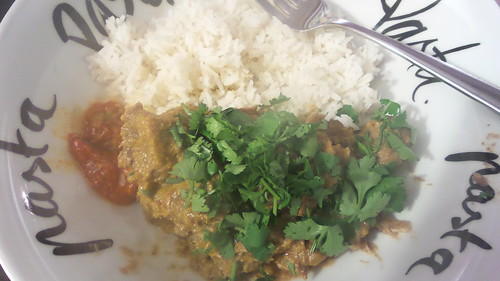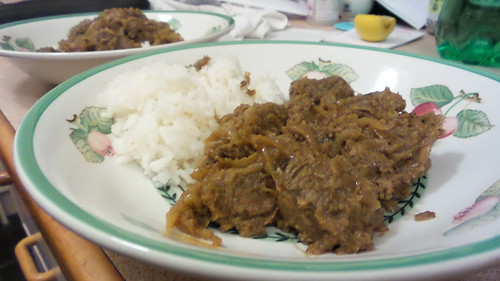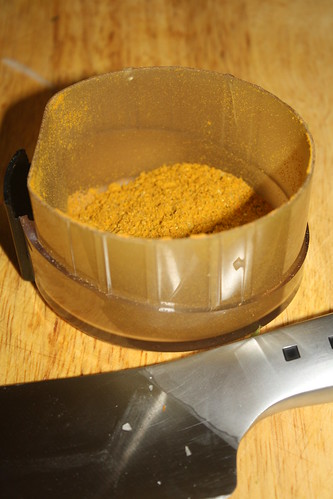 Ah, korma. That sad, sad little curry that seems to exist only on restaurant menus for those that can’t or won’t eat a ‘real’ curry.
Ah, korma. That sad, sad little curry that seems to exist only on restaurant menus for those that can’t or won’t eat a ‘real’ curry.
I understand how korma gets that reputation – in restaurants it is often bland and vaguely sweet. Why would you choose it when there are so many more exciting offerings?
This recipe, from Charmaine Solomon’s India and Pakistan, will ensure those kind of preconceptions are firmly put aside.
This recipe even has chillis in it so if you want it fiery, go ahead and make it fiery. The use of both nuts and yoghurt will help temper that heat anyway – and I suspect is what has led to the curry’s maligned character. Of course, you can always play it safe while cooking the curry and turn things up by adding a good dollop of hot lime pickle when you serve.
Ingredients
- 800g diced lamb (leg, preferably)
- 2 onions
- 1 tbsp fresh ginger, finely chopped
- 2 large cloves of garlic, crushed and chopped
- 40g raw, unsalted cashew nuts
- dried red chillis - to taste
- 2 tsp ground coriander
- 1 tsp ground cumin
- ¼ tsp ground cinnamon
- 1 green cardamom pod
- 2 cloves
- ½ tsp saffron strands
- 2 tbsp boiling water
- 20g ghee
- oil
- salt
- 125g plain yoghurt
- fresh coriander to serve
Instructions
- Begin by making a curry paste.
- Roughly chop one of the onions and place in a food processor with the ginger, garlic, cashew nuts and chillis. Add 125mL water and process to a smooth paste. Add the spices (if you have ground cardamom and cloves, use ¼ tsp of each, but I used the whole spices and the flavour was fine) and process until everything well combined.
- Put the saffron in a small bowl with the boiling water and set aside.
- Heat the ghee and some oil in a large heavy bottomed saucepan. Finely slice the remaining onion and cook until soft and golden. Add the spice mixture and cook, stirring, until the oil starts to separate out.
- Add a little water and salt and cook until the liquid has evaporated and then add the lamb. Stir thoroughly to ensure the lamb is well coated with the spice mix.
- Stir through the saffron (crush the strands against the sides of the bowl as you pour it in) and then add the yoghurt.
- Ensure the heat is low, cover and leave to simmer for at least an hour - until the lamb is tender. Make sure that the mixture doesn't boil and give it a stir every now and then.
- When you're ready to serve, stir through some coriander, leaving some aside for decoration. Serve with rice (and perhaps some hot lime pickle).


